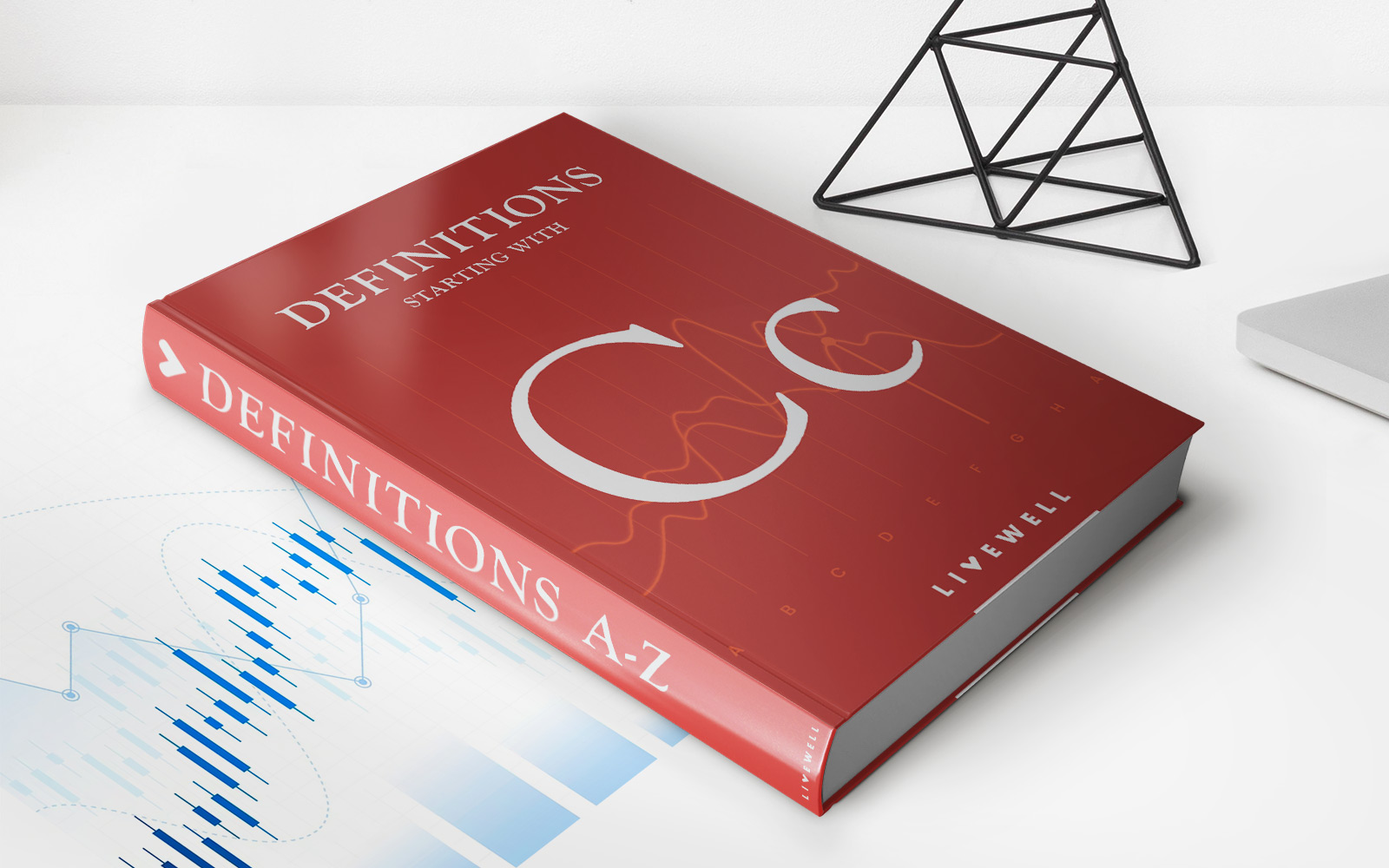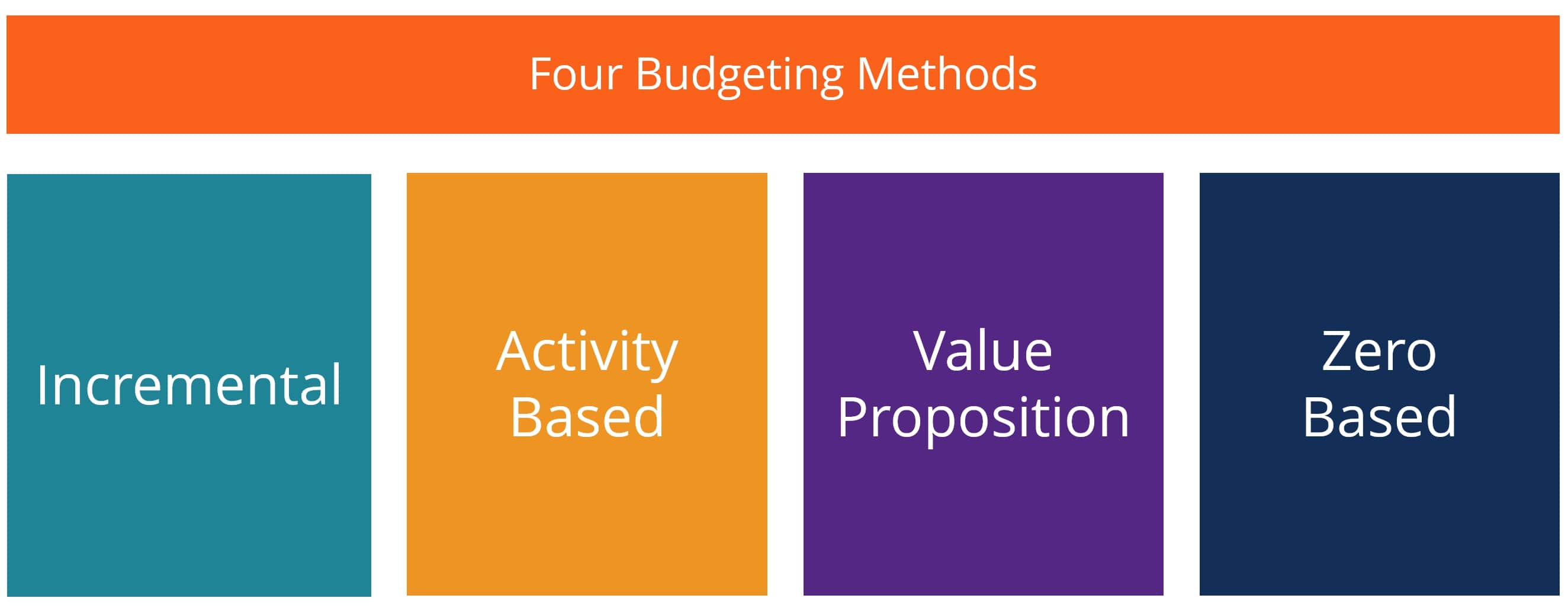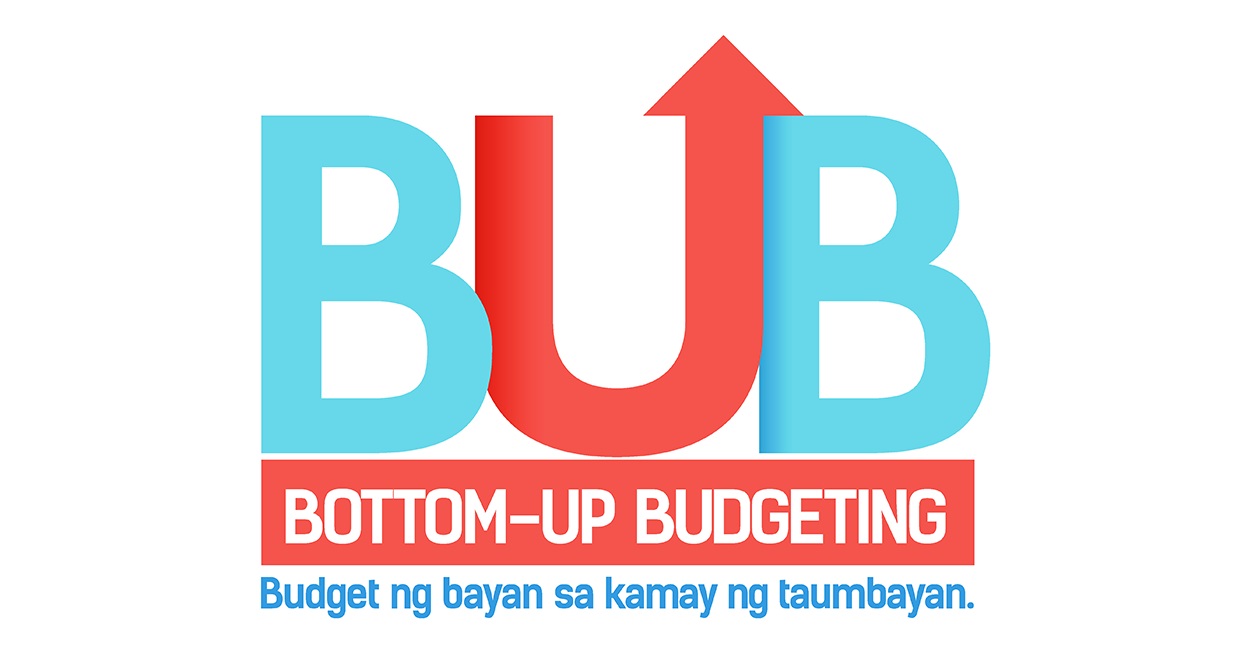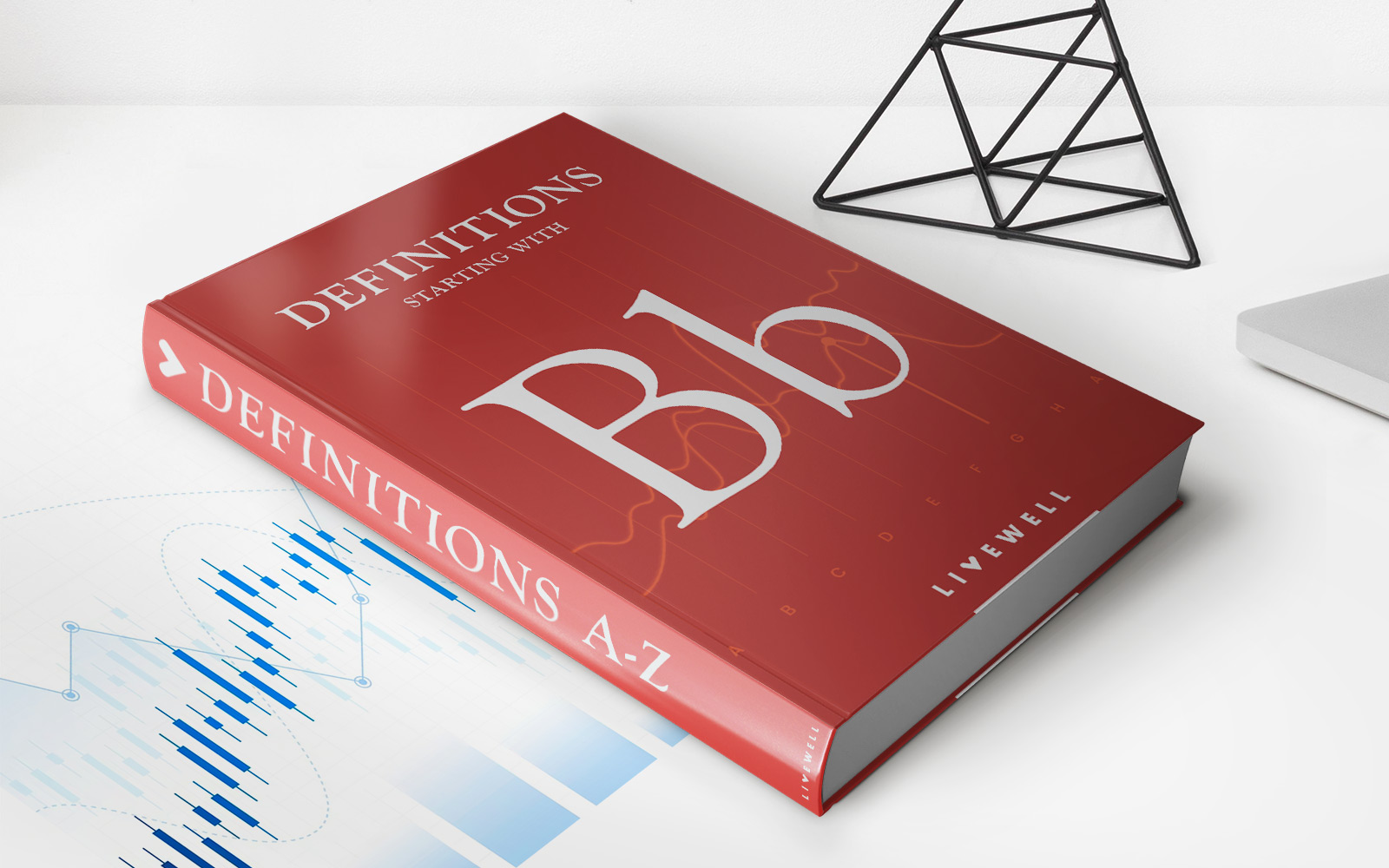Home>Finance>Which Method Takes A Bottom-Up Approach To Promotional Budgeting?


Finance
Which Method Takes A Bottom-Up Approach To Promotional Budgeting?
Published: October 11, 2023
Discover the finance method that uses a bottom-up approach for promotional budgeting. Optimize your financial planning with this effective strategy.
(Many of the links in this article redirect to a specific reviewed product. Your purchase of these products through affiliate links helps to generate commission for LiveWell, at no extra cost. Learn more)
Table of Contents
- Introduction
- What is Bottom-Up Approach to Promotional Budgeting?
- Benefits of Bottom-Up Approach
- Top-Down Approach vs. Bottom-Up Approach
- Which Method Takes a Bottom-Up Approach to Promotional Budgeting?
- Steps to Implement a Bottom-Up Approach
- Factors to Consider in Bottom-Up Promotional Budgeting
- Challenges and Limitations of Bottom-Up Approach
- Case Studies: Successful Implementation of Bottom-Up Promotional Budgeting
- Conclusion
Introduction
Promotional budgeting is a critical aspect of any marketing strategy. It involves allocating financial resources to various promotional activities that aim to increase brand awareness, drive customer engagement, and ultimately generate revenue. One of the key decisions marketers face when developing a promotional budget is choosing the most effective approach to allocate their resources.
In this article, we will explore the bottom-up approach to promotional budgeting and its benefits compared to the top-down approach. We will also discuss which method takes a bottom-up approach to promotional budgeting and provide insights on implementing this approach effectively. Additionally, we will delve into the factors to consider, challenges, and limitations associated with bottom-up promotional budgeting. Lastly, we will examine real-world case studies that highlight successful implementations of the bottom-up approach.
By understanding the bottom-up approach to promotional budgeting and its application in real-world scenarios, marketers can make informed decisions to optimize their promotional efforts and achieve their business objectives.
What is Bottom-Up Approach to Promotional Budgeting?
The bottom-up approach to promotional budgeting takes a granular and detailed approach to allocating resources for promotional activities. Unlike the top-down approach, which starts with an overall budget and then allocates it across various marketing activities, the bottom-up approach begins with individual promotional initiatives and calculates the costs associated with each of them.
With the bottom-up approach, marketers analyze each promotional activity individually, considering factors such as target audience, expected reach, desired outcomes, and costs. This method allows for greater control and flexibility in allocating resources according to the specific needs and goals of each promotion.
By breaking down the promotional budget into smaller components, marketers can evaluate the effectiveness of each initiative and make data-driven decisions on resource allocation. This approach enables a more accurate assessment of the ROI for each promotional activity, leading to more efficient use of resources and better overall performance.
Implementing a bottom-up approach involves conducting a thorough analysis of different promotional strategies, channels, and tactics. Marketers need to consider various factors including the target market, competitive landscape, marketing objectives, and available resources. By understanding the unique requirements and potential impact of each promotional initiative, marketers can allocate budgets in a way that optimizes results and maximizes return on investment.
In summary, the bottom-up approach to promotional budgeting involves analyzing and allocating resources to individual promotional activities based on their specific goals, costs, and expected outcomes. This method allows for greater flexibility and control, enabling marketers to make informed decisions and optimize their promotional efforts to achieve desired outcomes.
Benefits of Bottom-Up Approach
The bottom-up approach to promotional budgeting offers several key benefits for marketers. Let’s explore some of the advantages of implementing this approach:
- Accuracy in Budget Allocation: By analyzing each promotional activity individually, the bottom-up approach ensures that resources are allocated accurately and in line with specific promotional goals. This granular approach takes into account the unique requirements and costs associated with each initiative, leading to a more precise budget allocation.
- Flexibility and Adaptability: The bottom-up approach allows marketers to adjust and reallocate resources based on the performance and effectiveness of individual promotional activities. If a particular initiative is yielding better results than expected, marketers can invest more resources into it to maximize its impact. Conversely, if a promotional effort is underperforming, resources can be reallocated to more effective initiatives.
- Data-Driven Decision Making: By evaluating the ROI and performance of each promotional activity, the bottom-up approach enables marketers to make data-driven decisions. This approach provides insights into the effectiveness of different initiatives, allowing marketers to optimize their promotional strategies based on actual results and analytics.
- Better Accountability: With the bottom-up approach, marketers can track and measure the success of each promotional activity individually. This enhances accountability and provides a clear understanding of the impact and contribution of each initiative to the overall marketing objectives. It becomes easier to identify which strategies are delivering the desired outcomes and adjust the budget allocation accordingly.
- Improved Resource Optimization: The bottom-up approach helps marketers identify unnecessary or inefficient promotional activities that may be consuming resources without delivering commensurate results. By evaluating each initiative’s ROI, marketers can optimize their resource allocation, ensuring that the budget is utilized for activities that yield the greatest returns.
Overall, the bottom-up approach to promotional budgeting offers greater accuracy, flexibility, data-driven decision making, accountability, and resource optimization. By analyzing and allocating resources at a granular level, marketers can optimize their promotional efforts, enhance performance, and achieve better overall results.
Top-Down Approach vs. Bottom-Up Approach
Top-down and bottom-up approaches are two contrasting methods used in promotional budgeting. Let’s compare and contrast these two approaches to better understand their differences:
Top-Down Approach:
In the top-down approach, the budget is determined at the overall organizational level or the marketing department level. A predetermined budget amount is allocated to different marketing activities, including promotional efforts, based on assumptions, historical data, or benchmarking. The budget is then divided among various initiatives without delving into the specifics or individual requirements of each promotional activity.
While the top-down approach provides a high-level perspective and ensures consistency across the marketing strategy, it may lack accuracy and flexibility. Since the budgets are predetermined, there might be limitations in adjusting resources based on the performance of individual initiatives. This approach assumes that all promotions would yield similar results and allocates resources proportionately, irrespective of their unique goals and costs.
Bottom-Up Approach:
On the other hand, the bottom-up approach takes a detailed and granular approach to promotional budgeting. Instead of setting a predetermined budget, marketers evaluate each promotional activity individually and allocate resources based on their specific requirements, costs, and expected outcomes.
The bottom-up approach allows for greater accuracy in budget allocation, as it takes into account the unique goals and costs associated with each initiative. It offers the flexibility to adjust and reallocate resources based on the performance of individual activities, maximizing the impact of successful promotions while minimizing investment in underperforming ones.
While the bottom-up approach provides more control and granularity, it may require more time and effort to analyze each promotion individually. It also requires a deep understanding of the costs and potential returns of various promotional activities.
Comparison:
The top-down approach is suitable when there is a stable and predictable marketing environment, established promotional strategies, and when consistency across promotional efforts is crucial. It is efficient for organizations with limited resources to allocate and a well-defined marketing plan.
In contrast, the bottom-up approach is beneficial when there is a need for flexibility, adaptability, and accurate resource allocation based on individual promotional initiatives. It allows for data-driven decision making and optimization of promotional efforts based on actual performance.
Ultimately, the choice between the top-down and bottom-up approach depends on the organization’s specific needs, resources, market dynamics, and strategic objectives. Some organizations may even adopt a hybrid approach, combining elements of both methods to achieve an optimal promotional budgeting strategy.
Which Method Takes a Bottom-Up Approach to Promotional Budgeting?
In the realm of promotional budgeting, the method that takes a bottom-up approach is known as incremental budgeting. Incremental budgeting involves allocating resources based on a thorough evaluation of individual promotional activities and their associated costs and potential returns.
With incremental budgeting, marketers start by identifying and analyzing each promotional initiative separately. They consider factors such as target audience, desired outcomes, estimated reach, and the resources required to execute each activity effectively. By evaluating the specific goals and costs of each promotion, marketers can allocate resources accordingly.
This bottom-up approach allows for greater accuracy and flexibility in budget allocation. Instead of relying on pre-determined budget amounts or percentage-based allocations, incremental budgeting ensures that resources are allocated based on the unique requirements and potential impact of each promotional activity.
Implementing incremental budgeting typically involves going through the following steps:
- Identifying Promotional Activities: Marketers identify and list all potential promotional initiatives that align with their marketing objectives.
- Evaluating Each Initiative: Marketers conduct a thorough evaluation of each promotional activity, considering factors such as costs, expected ROI, target audience, and strategic objectives.
- Resource Allocation: Resources are allocated to each promotional initiative based on its individual evaluation and potential impact on the overall marketing strategy.
- Monitoring and Adjusting: As promotions are executed, marketers monitor their performance, gather data, and make adjustments to the resource allocation if necessary.
- Reviewing and Iterating: Marketers review the effectiveness of each promotion, analyze the results, and iterate their promotional budgeting approach for future campaigns.
By taking a bottom-up approach through incremental budgeting, marketers can ensure that resources are allocated optimally, resulting in a more efficient and effective promotional strategy. This method allows for adaptability, data-driven decision making, and a stronger alignment between budgets and marketing objectives.
It is important to note that while incremental budgeting follows a bottom-up approach, its implementation may vary depending on the organization’s specific needs, industry dynamics, and available resources. However, the core principle remains the same – allocating resources based on the individual evaluation of each promotional activity.
Steps to Implement a Bottom-Up Approach
Implementing a bottom-up approach to promotional budgeting requires careful planning and analysis. By following these steps, marketers can effectively implement the bottom-up approach and optimize their resource allocation:
- Identify Promotional Activities: Begin by identifying all potential promotional activities that align with your marketing objectives. Consider various channels, such as digital advertising, social media campaigns, content marketing, events, and traditional advertising.
- Evaluate Each Activity: Analyze each promotional activity individually, considering factors such as target audience, desired outcomes, costs, and potential return on investment. Assess the estimated reach, engagement, and conversion rates associated with each initiative.
- Assign Costs: Assign costs to each promotional activity, including factors such as creative development, media buying, production, distribution, and any other expenses associated with the specific initiative. Ensure that costs are accurately estimated based on market rates and historical data.
- Analyze Resource Availability: Evaluate the available resources, both financial and personnel, to determine the feasibility of implementing each promotional activity. Consider the skills and expertise required for each initiative and align with the available team members or outsourced resources.
- Allocate Resources: Based on the evaluations and available resources, allocate an appropriate budget to each promotional activity. Distribute resources according to the goals and potential impact of each initiative, ensuring that high-priority campaigns receive adequate funding.
- Monitor and Measure: Implement tracking mechanisms and metrics to monitor the performance of each promotional activity throughout its execution. Regularly measure key performance indicators (KPIs) to evaluate the success and impact of each initiative.
- Optimize Resource Allocation: Continuously review the performance data and adjust resource allocation as necessary. Shift resources from underperforming initiatives to those yielding better results, maximizing the ROI of your promotional efforts.
- Iterate and Improve: Learn from the outcomes of each promotional activity and leverage the insights gained to refine your promotional budgeting approach. Regularly review and iterate your budget allocation strategy, incorporating lessons learned to enhance future campaigns.
By following these steps, marketers can implement a bottom-up approach to promotional budgeting that allows for accurate resource allocation, adaptability, and data-driven decision making. This method helps optimize the effectiveness and impact of each promotional activity, leading to better overall results and return on investment.
Factors to Consider in Bottom-Up Promotional Budgeting
When implementing a bottom-up approach to promotional budgeting, there are several key factors that marketers need to consider. These factors play a crucial role in accurate resource allocation, effective promotional strategies, and maximizing return on investment. Here are some important factors to consider:
- Marketing Objectives: Clearly define your marketing objectives and align them with your promotional activities. Determine the specific goals you want to achieve through your promotions, such as increasing brand awareness, driving website traffic, generating leads, or boosting sales.
- Target Audience: Identify and analyze your target audience for each promotional activity. Consider factors such as demographics, preferences, needs, and behavior to ensure that your promotions effectively reach and resonate with the intended audience.
- Competitive Landscape: Evaluate the competitive landscape and understand the promotional activities of your competitors. Identify their strengths and weaknesses, and leverage this analysis to develop unique and impactful promotional strategies.
- Available Resources: Assess the financial and personnel resources available for your promotional campaigns. Consider factors such as budget constraints, manpower, expertise, and technology to ensure that your resource allocation is aligned with what is realistically achievable.
- Channel Selection: Choose the most appropriate promotional channels based on your target audience and marketing goals. Consider digital platforms, traditional media, social media, email marketing, content marketing, events, and partnerships to reach your audience effectively.
- Cost Analysis: Estimate the costs associated with each promotional activity. Consider factors such as creative development, media buying, production, distribution, and any additional expenses involved in executing the campaign. Accurate cost estimation ensures that budget allocation aligns with the specific requirements of each initiative.
- Expected ROI: Evaluate the potential return on investment for each promotional activity. Consider the expected outcomes, such as increased sales, customer acquisition, brand recognition, or customer loyalty. Assess the potential impact on revenue and profitability when allocating resources.
- Measurable Metrics: Define key performance indicators (KPIs) to measure the success and impact of each promotional activity. Establish metrics such as website traffic, conversion rates, customer engagement, revenue generated, or brand sentiment. These metrics will help track the effectiveness of your promotions and make data-driven decisions.
By considering these factors, marketers can make informed decisions when implementing bottom-up promotional budgeting. Aligning promotional initiatives with marketing objectives, target audience, available resources, and expected ROI ensures that resources are allocated optimally and promotional efforts are effectively targeted and measurable.
Challenges and Limitations of Bottom-Up Approach
While the bottom-up approach to promotional budgeting offers numerous advantages, it also comes with several challenges and limitations. It’s important to be aware of these potential obstacles to ensure effective implementation. Here are some key challenges to consider:
- Data Availability and Accuracy: Gathering accurate data on costs, performance metrics, and expected outcomes for each promotional activity can be challenging. Relying on incomplete or inaccurate data can lead to skewed resource allocation and ineffective decision making.
- Time and Effort: The bottom-up approach requires meticulous analysis and evaluation of each promotional activity, which can be time-consuming and resource-intensive. Marketers must be willing to invest the necessary time and effort to ensure accurate resource allocation.
- Complexity of Evaluation: Assessing the potential return on investment and predicting the outcomes of each promotional activity accurately can be challenging. External factors, such as market dynamics and changing consumer preferences, can impact the effectiveness of campaigns, making predictions more difficult.
- Resource Constraints: Limited financial and personnel resources can restrict the implementation of the bottom-up approach. Organizations with tight budgets may struggle to allocate resources in a granular manner, potentially limiting the flexibility and effectiveness of promotional activities.
- Overemphasis on Short-Term Results: The bottom-up approach may lead to a focus on short-term outcomes and immediate returns, potentially overshadowing long-term brand-building efforts. It’s important to strike a balance between short-term objectives and long-term strategic goals.
- Difficulty in Prioritization: With numerous promotional activities and limited resources, prioritizing initiatives becomes crucial. Allocating resources among various campaigns while considering their relative importance and potential impact can be a challenging and subjective process.
- Siloed Decision Making: In larger organizations with multiple departments and teams, implementing a bottom-up approach may result in isolated decision making. Lack of collaboration and coordination between departments can hinder the overall effectiveness of promotional efforts.
Despite these challenges, the bottom-up approach can still be highly effective when executed carefully. It is important to address these limitations by utilizing accurate data, involving cross-functional teams in the decision-making process, and regularly reviewing and adjusting resource allocation based on the performance of promotional activities.
By taking a proactive approach to managing the challenges and limitations, marketers can leverage the benefits of the bottom-up approach and optimize their promotional budgeting strategies to drive success in their marketing campaigns.
Case Studies: Successful Implementation of Bottom-Up Promotional Budgeting
Examining case studies of successful implementation of the bottom-up approach to promotional budgeting can provide valuable insights into the effectiveness and potential impact of this strategy. Here are two examples of companies that have achieved success through the implementation of the bottom-up approach:
- Case Study 1: Company X:
- Case Study 2: Company Y:
Company X, a global consumer goods company, implemented a bottom-up approach to their promotional budgeting strategy. They started by identifying various promotional activities, including television and online advertising, social media campaigns, and influencer partnerships. Through meticulous evaluation, they assessed the target audience, costs, and expected returns for each initiative.
By utilizing accurate performance data and customer insights, Company X allocated resources based on the potential impact of each promotional activity. They monitored key performance indicators such as website traffic, engagement, and sales conversion rates to measure the success of their campaigns.
Through this bottom-up approach, Company X optimized their budget allocation, focusing on the initiatives that demonstrated strong returns and adjusting resource allocation accordingly. As a result, they achieved significant improvements in brand awareness, customer engagement, and overall sales performance.
Company Y, a software-as-a-service (SaaS) company, implemented a bottom-up approach to their promotional budgeting process. They identified various promotional activities, including content marketing, search engine optimization (SEO), online advertising, and email marketing.
Through careful analysis and cost evaluation, Company Y allocated resources based on the specific goals and potential impact of each initiative. They utilized data analytics and regularly monitored the performance of their campaigns, focusing on metrics such as lead generation, conversion rates, and customer acquisition costs.
By adjusting their resource allocation based on the performance data, Company Y was able to optimize their promotional efforts. They increased investment in campaigns that yielded strong results and reallocated resources from underperforming initiatives. This approach led to a significant increase in lead generation, customer acquisition, and revenue growth for Company Y.
These case studies highlight the power of the bottom-up approach to promotional budgeting in driving success in marketing campaigns. By analyzing individual promotional activities, accurately allocating resources, and making data-driven decisions, both companies were able to optimize their budget allocation, enhance performance, and achieve their marketing objectives.
It is important to recognize that successful implementation of the bottom-up approach requires careful planning, accurate data analysis, and a continuous evaluation of campaign performance. Ongoing monitoring and adjustments based on real-time performance insights are crucial to maximize the effectiveness of promotional budgeting strategies.
Conclusion
The bottom-up approach to promotional budgeting offers numerous advantages for marketers aiming to maximize the effectiveness of their promotional efforts. By analyzing and allocating resources at a granular level, marketers can optimize their budget allocation, adapt to changing market dynamics, and make data-driven decisions to achieve their marketing goals.
Throughout this article, we discussed the key concepts of bottom-up promotional budgeting, the benefits it offers compared to the top-down approach, and the steps involved in implementing this approach effectively. We explored the factors to consider, such as marketing objectives, target audience, and available resources, that play a crucial role in accurate resource allocation. We also acknowledged the challenges and limitations that come with the bottom-up approach, emphasizing the need to address these obstacles proactively.
Furthermore, we presented case studies showcasing successful implementations of the bottom-up approach. These examples demonstrated how companies leveraged accurate data analysis, strategic resource allocation, and continuous monitoring and adjustments to achieve significant improvements in brand awareness, customer engagement, lead generation, and revenue growth.
In conclusion, the bottom-up approach to promotional budgeting enables marketers to make informed decisions regarding resource allocation, optimize performance, and drive desired outcomes. By taking into account the unique requirements and potential impact of each promotional initiative, marketers can strategically invest their resources and generate a stronger return on investment. It is important for marketers to continually review and iterate their promotional budgeting strategies, adapting to market changes and emerging trends.
Implementing the bottom-up approach requires careful planning, accurate data analysis, and a commitment to regularly monitor and adjust promotional activities. With the right strategies and a deep understanding of target audiences, organizations can effectively allocate their promotional budgets and achieve their marketing objectives with precision and efficiency.














